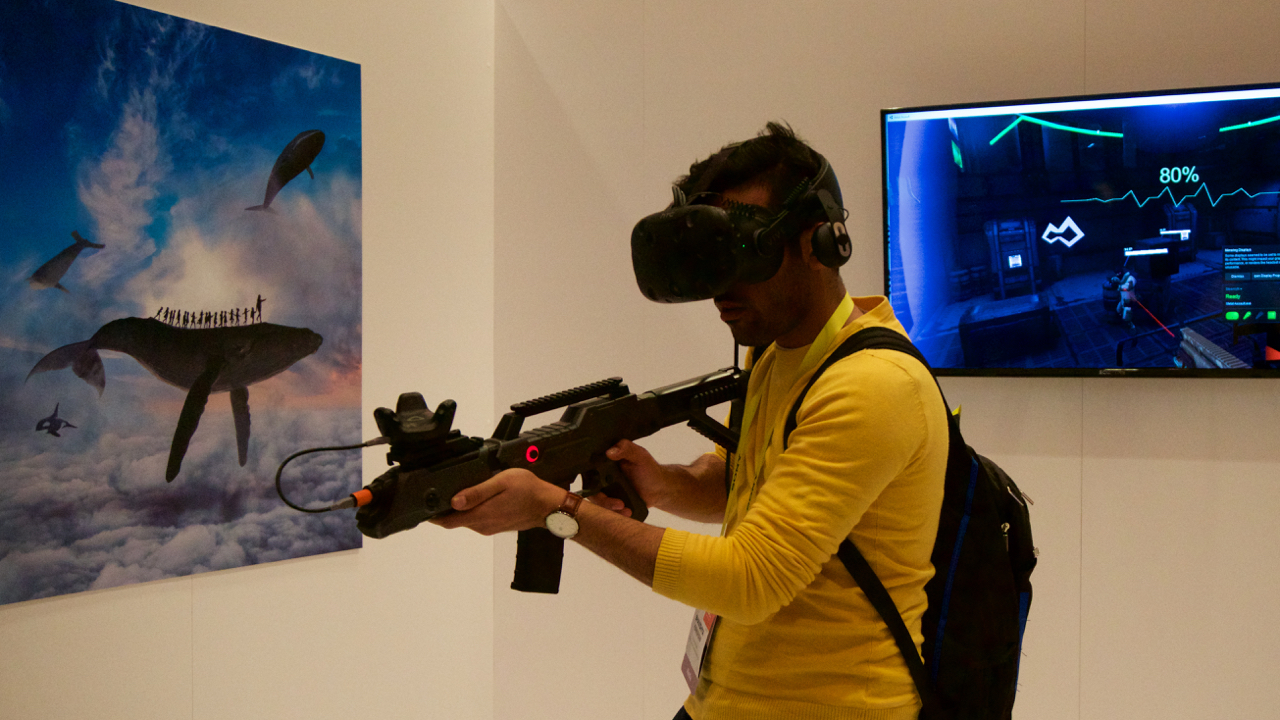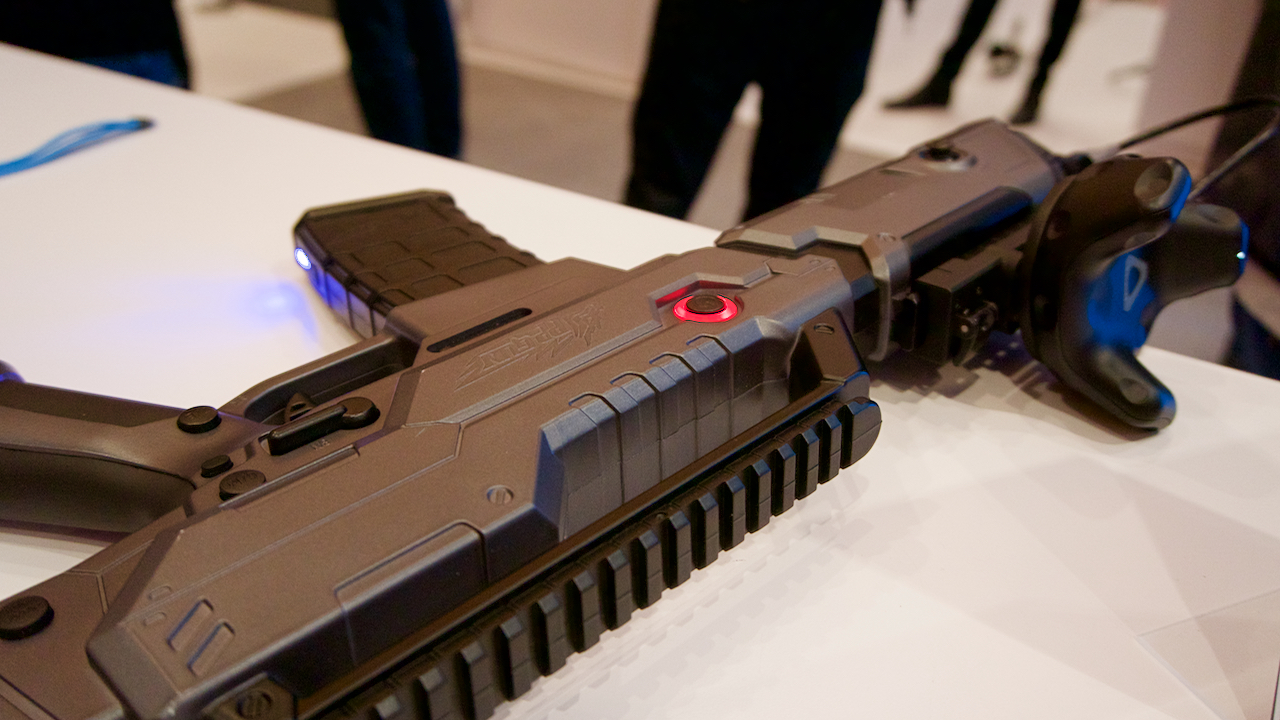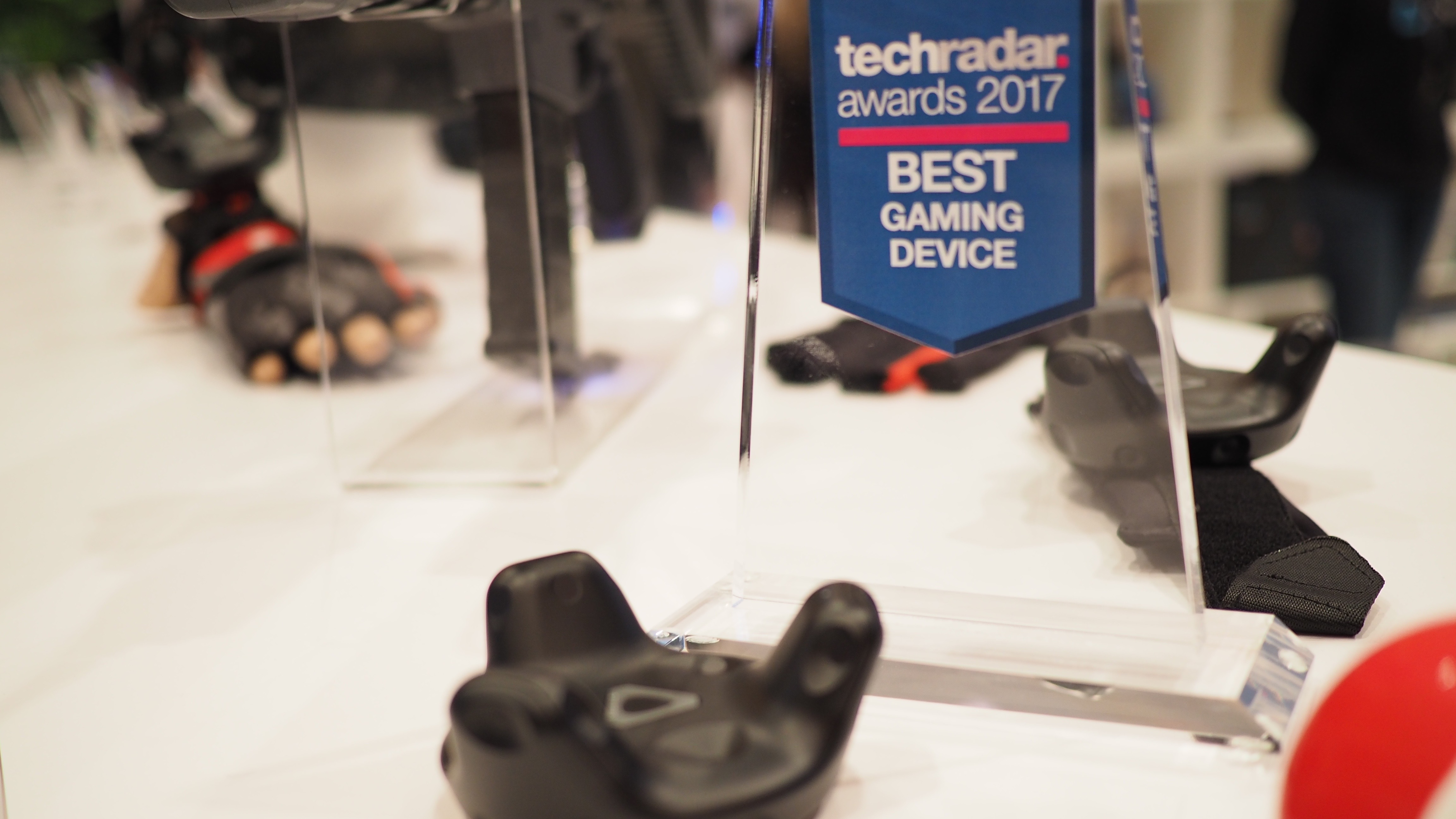HTC Vive Tracker is the answer to new kinds of gameplay and multiplayer VR

Update: The Vive Tracker is available for developers to purchase starting today, March 27, on Vive's website. A full consumer release is expected later in the year.
Look around you house. What do you see? You might have a broom in the kitchen or a baseball bat in the garage. You might have a garden hose outside or a toy gun in the closet.
All of these things, and literally anything else, could be your next HTC Vive controller – all thanks to a new device from HTC called the Vive Tracker.
The device was unveiled at a private HTC event at CES 2017 alongside the new Vive Deluxe Audio, a headband that offers similar functionality to Oculus Rift’s earpads, and the news that TPCAST, the device that enables tetherless gameplay, is leaving China and coming to the rest of the world in 2017.
It’s worth mentioning those products because, let’s face it, they’re new and novel. But both pale in comparison to what HTC is offering with the Vive Tracker.
- Embrace VR with one of the best computers money can buy

After speaking with a half-dozen developers, the best comparison for the Tracker is an additional game console controller. By itself, it adds little to nothing to your setup. But get a friend involved – or, in this case, add a new object – and it’s a whole new ball game.
Of course, it’s not all up to you which object comes into VR with you. Developers have a large say in the matter.
Sign up for breaking news, reviews, opinion, top tech deals, and more.
You see, it’s up to them to create the virtual environment that makes sense – a baseball stadium if you’re playing a baseball video game with a real bat or an alien world if your playing a shooting game set in space. And things become slightly more convoluted when you make, say, a first-person shooter which requires not only a gun controller, but a Bluetooth one at that.
There are some clear limitations to the Tracker, there’s no doubt about it. But what it promises is a whole new world for developers to play around with: the real one.

A whole new world
The Tracker bears a strong resemblance to the ends of the HTC Vive’s motion controller.
Small divots line the 10cm-in-diameter ring, while a universal mount sits on the other side. The divots allow the Vive’s sensor array to track where the object is in the room while the universal mount allows you to attach the sensor to a tripod or, more creatively, a selfie stick.
At the HTC event, the sensor was hooked up to a number of seemingly mundane objects that were all connected in one way or another to a PC. But appearances are misleading. These weren’t misplaced household items that needed to be filed away in a closet – these were all controllers used by real games.
There was a baseball game that felt more realistic because you were holding a bat, a Bluetooth-enabled (and quite heavy) fire hose that’s going to be used to teach firefighters and a camera became a tool used to document alien species.
This is exactly what HTC had in mind when it developed the Tracker – unlimited potential to turn whatever item you want into a controller.

When worlds collide
So how does it work? In practice, extraordinarily well.
The first game we tried was a local multiplayer shooter, the first of its kind on the HTC Vive. It’s being developed by a small indie design studio called Master of Shapes and allows you and up to five friends shoot incoming bad guys on a desert planet.
Each person joining the game was given a Bluetooth gun controller and a smartphone. What made the game interesting is that the Lighthouse sensors from the Vive picked up where the Trackers were in real time and rendered the guns of those players in-game. It would’ve been nice for each player to have been given their own avatar, but hey, we’re just getting started.
The next game we checked out actually doubled as a training tool for firefighters. The demo used a real, honest firehose that had been retrofitted with haptic feedback sensors and a Vive Tracker. Pull the grip and the controller would actually push against your arm, helping it paint a more realistic portrait of what it’d be like to try and hold a firehose while it’s on.
Inside the headset, we were in a room filling with smoke from a small electrical fire that erupted from an oven. Before the Tracker, potential firefighters would’ve used the standard HTC Vive controllers to put out the flame. But controllers are nothing like the real-world equipment they need to use everyday – a problem that only the Vive Tracker can solve.

The final game we checked out was a baseball simulator that included a hefty wooden bat with a Tracker attached to the butt-end. Using a wooden bat instead of a lightweight plastic controller completely changed the experience of playing a sports game in VR.
And while baseball was the only sports title on display at the event, there’s almost nothing stopping someone from putting trackers on tennis rackets, hockey sticks and golf clubs – enabling the next generation of sports games.
- VR demands only the best graphics card to get the job done

Nick Pino is Managing Editor, TV and AV for TechRadar's sister site, Tom's Guide. Previously, he was the Senior Editor of Home Entertainment at TechRadar, covering TVs, headphones, speakers, video games, VR and streaming devices. He's also written for GamesRadar+, Official Xbox Magazine, PC Gamer and other outlets over the last decade, and he has a degree in computer science he's not using if anyone wants it.